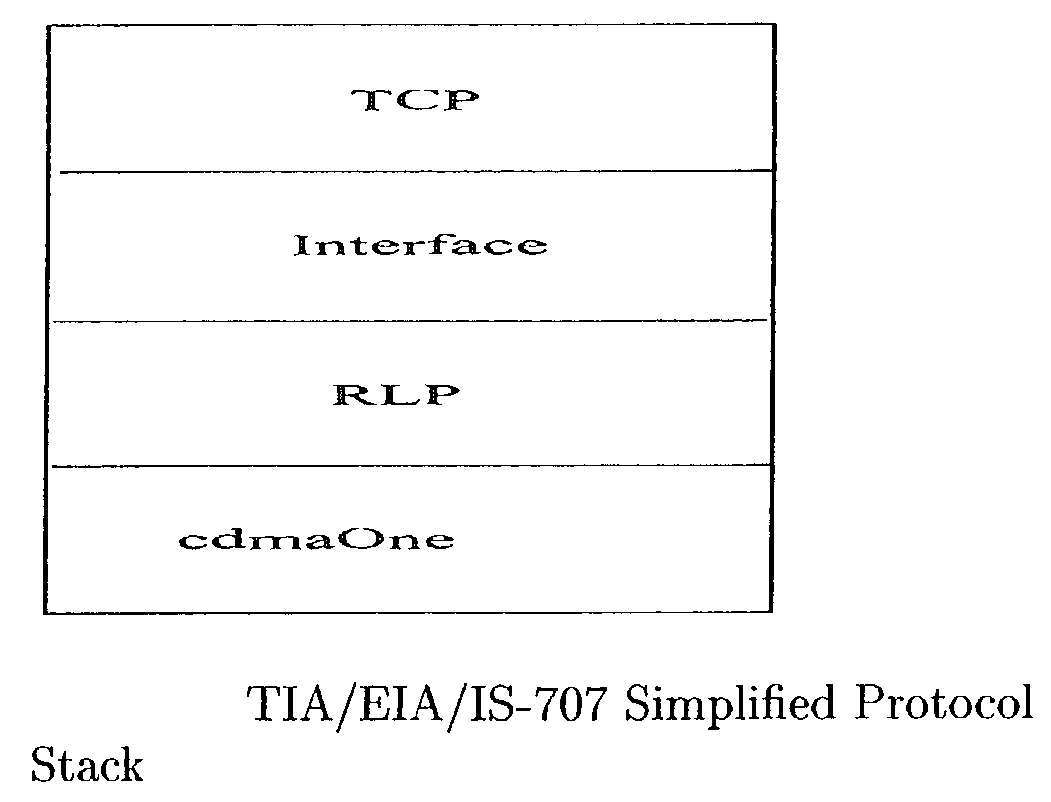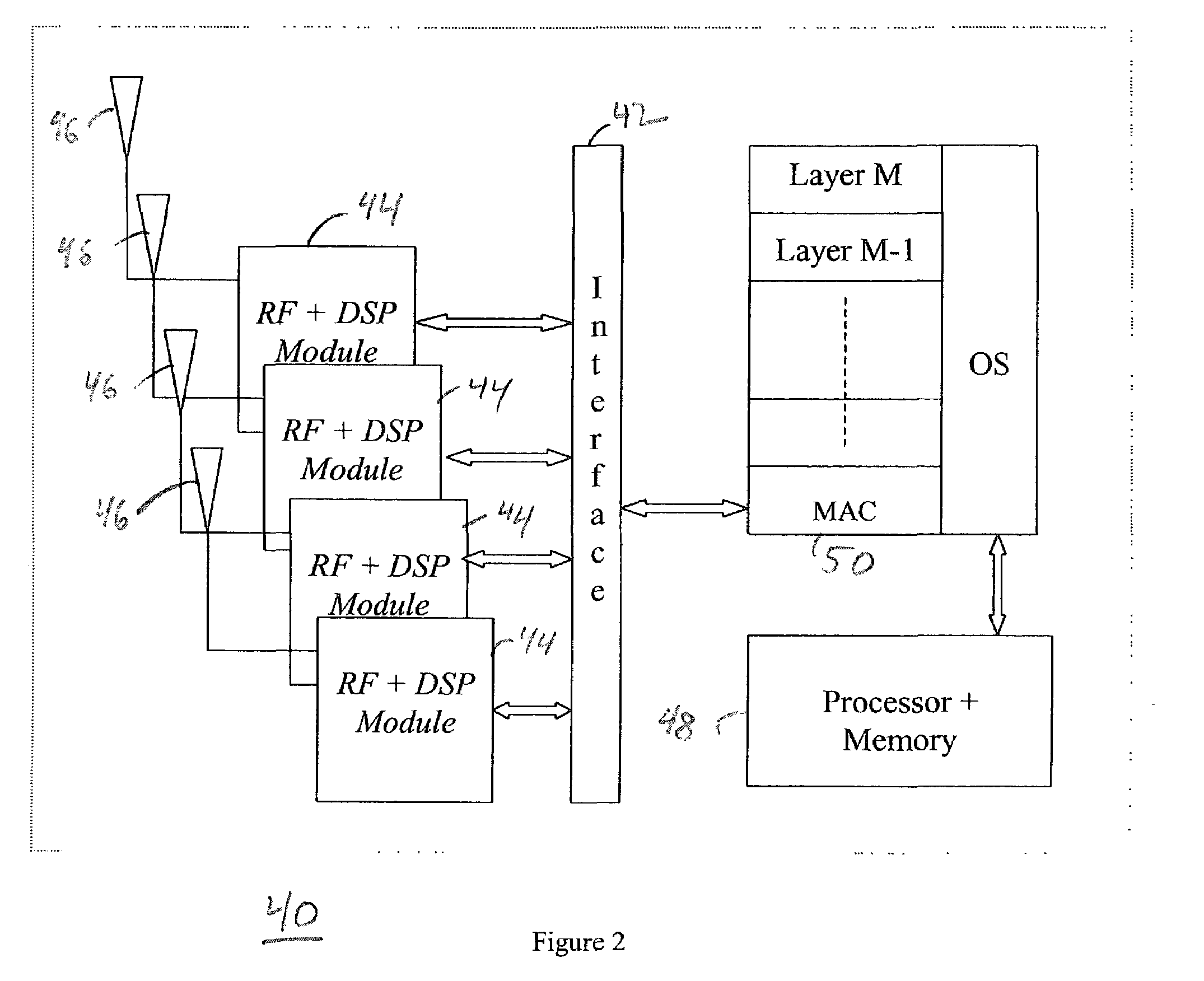Adaptive radio link protocol (RLP) to improve performance of TCP in wireless environment for CDMAone and CDMA2000 systems
a technology of cdmaone and cdma2000, applied in the field of adaptive radio link protocol (rlp) to improve the performance of tcp, can solve the problems of lowering throughput, poor performance of tcp over wireless link, and slow data transmission
- Summary
- Abstract
- Description
- Claims
- Application Information
AI Technical Summary
Benefits of technology
Problems solved by technology
Method used
Image
Examples
Embodiment Construction
[0027]While the invention covers many variations and embodiments, there is shown in the drawings and will be described in this disclosure illustrative methods and embodiments with the understanding that the illustrative method(s) and embodiment(s) are to be considered only one example of the invention, and are not intended to limit the invention to the illustrative method(s) and embodiment(s) shown.
[0028]The invention relates generally to mobile and base stations for wireless networks and, in particular, to mobile and base stations that run TCP / IP applications on wireless networks. The invention also relates to an improved ARQ method, and in particular, an improved method of exchanging NAK messages. In addition, this invention relates to mobile stations and / or base stations configured to perform the improved ARQ method of exchanging NAK messages in CDMA network environments. However, those skilled in the art will recognize that the invention is not limited to mobile stations and / or ...
PUM
 Login to View More
Login to View More Abstract
Description
Claims
Application Information
 Login to View More
Login to View More - R&D
- Intellectual Property
- Life Sciences
- Materials
- Tech Scout
- Unparalleled Data Quality
- Higher Quality Content
- 60% Fewer Hallucinations
Browse by: Latest US Patents, China's latest patents, Technical Efficacy Thesaurus, Application Domain, Technology Topic, Popular Technical Reports.
© 2025 PatSnap. All rights reserved.Legal|Privacy policy|Modern Slavery Act Transparency Statement|Sitemap|About US| Contact US: help@patsnap.com



